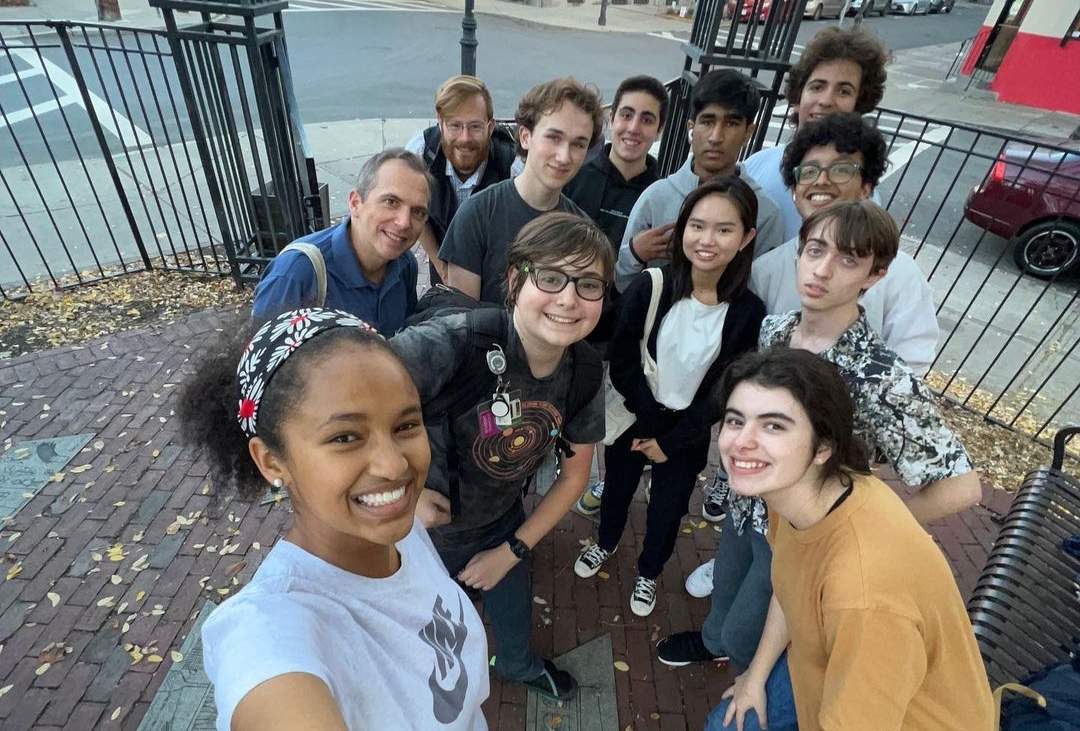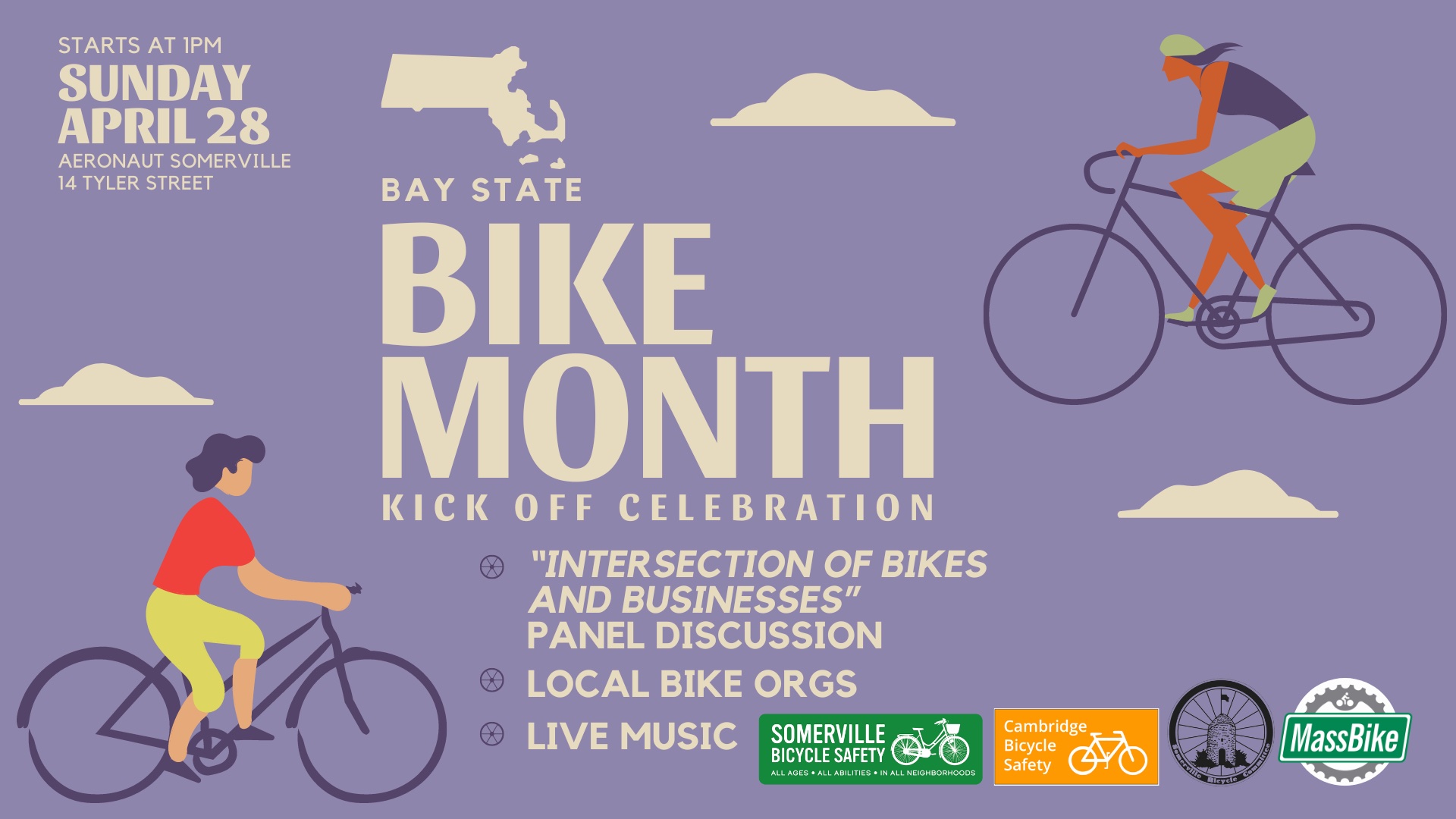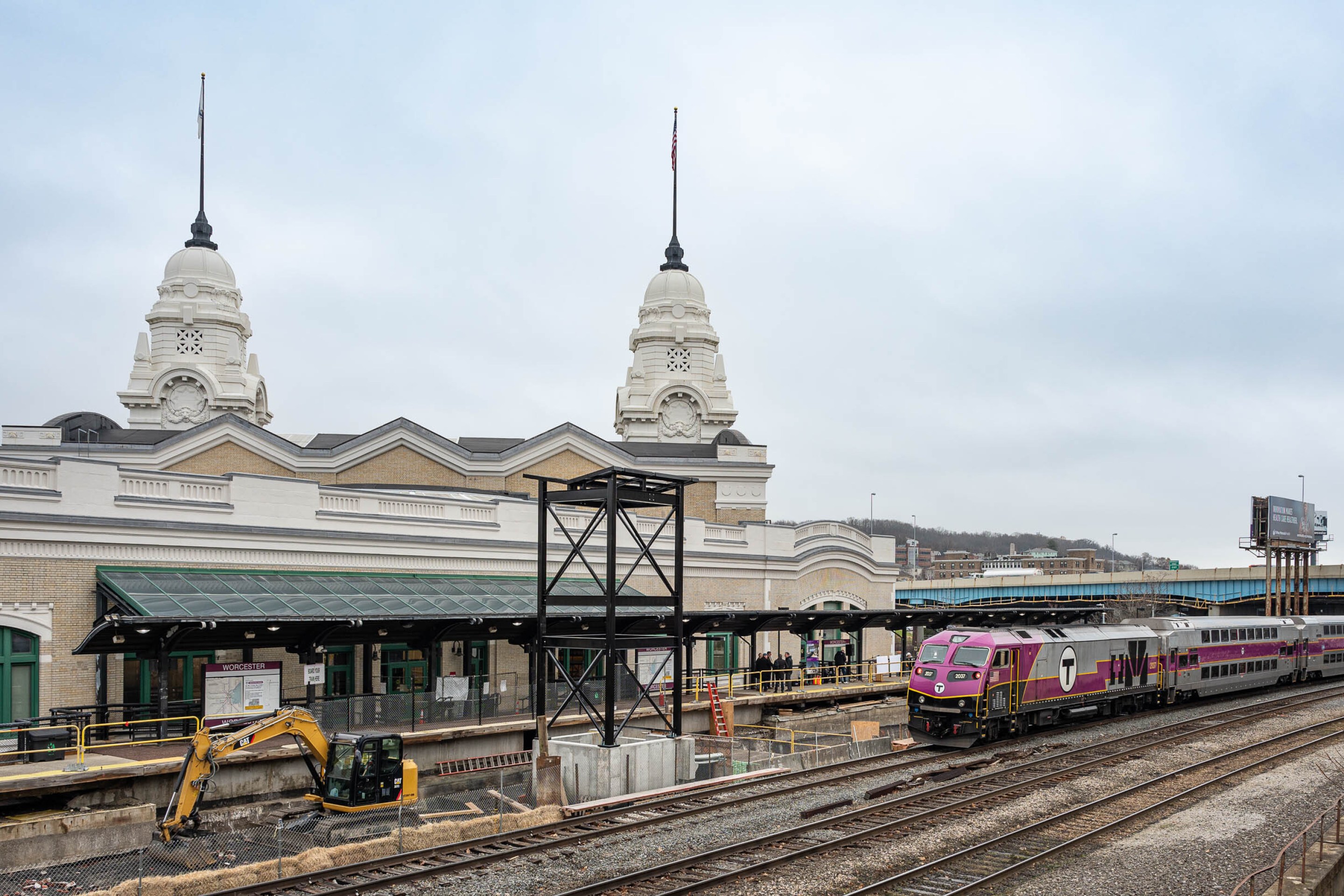Guest Column: Student Transit Advocates Make Riding the T a Varsity Sport
7:10 AM EST on December 12, 2023

Boston University Academy Transit Club members pose for a selfie in Kayem Park in Chelsea at the end of their first transit race, on November 4, 2022. Left to right: Abigail Araia, Dr. Mark Alonge (chaperone and club advisor), Mr. Anthony Vitali (chaperone), Henry Resnick, Lucian Hargrave, Nye Matta, Tracy He, Vivaan Sabharwal, Sarah Emmert, Nikhil Rich, Ilias Benmokrane, and Theo Chitkushev. Courtesy of the B.U. Academy Transit Club.
Most people ride the train or bus around Boston for work, shopping, or leisure. The Transit Advocacy Club at Boston University Academy – a high school on the campus of Boston University – rides it as a competition to test the limits of the transportation system, and, most importantly, to teach our community the value of public transit.
A couple years ago, I met Miles Taylor, the editor of a local transit blog called Miles In Transit. He came up with the idea to race his friends using different modes of the MBTA system.
I realized then that the field of transit enthusiasts was much larger than I expected, and last year I founded the first transportation club in my high school’s history.
BUA’s Transit Advocacy Club aims to help teach students about local modes of public transportation, making them more comfortable in their journeys around the city. Many times I’ve had people come up to me and thank them for discovering a new way to get to school, a bus stop near their home that they’ve never noticed, or a train that comes right as they leave work.
I have been involved in transit advocacy for over six years. I’ve lived in communities served by the MBTA my whole life, making me extremely familiar and deeply interested in the system. I’m thrilled to have my classmates share the same deep passion for expanding student usage in local public transportation.
In the club’s short year-long history, we’ve hosted two transit races – student-led, teacher-chaperoned outings where two teams of riders take different routes that are scheduled to arrive at a location at the exact same time.
Last year, the club raced to Chelsea’s Bellingham Square, discovering the fastest route to that location was over the Mystic River using the 111 bus route. Many of the participants in the transit race rode this key bus route for the first time. They learned how the authority operates these high- frequency lines, with quick departures and busy stops. The 111 in particular shuttles commuters north of Boston along the Tobin Bridge, with a new bus lane on the southbound deck.
This year, the transit race destination was Waltham Square, and students found out about the 70 bus route, another key bus line that travels through Allston and Watertown.
One of the teacher chaperones asked, “where’s the thrill in all this?” By the end of the ride, he was running to the finish line with a bright grin, realizing we'd beat the other team.
Apart from the feelings of victory and pride, the main objective of the transit race is simply understanding cities’ transportation options and where they excel and disappoint.
During the second race, a few people noted the lack of a dedicated bus lane along the parts of Western Avenue corridor. Despite the abundance of space, the bus traveled slowly in mixed traffic during the peak of rush hour. Additionally, we noticed how bikers’ safety was put at jeopardy with the lack of even a buffer at some points. Luckily, the City of Boston has several projects in the pipeline to address these issues.
Inside the school, the Transit Advocacy Club still works hard to spread awareness about local transportation. We’ve hosted countless meetings with topics including instructing new students on how to use the Transit app to navigate through the city; discussing the history of transportation; and even help drafting proposals regarding safer and more convenient transportation to local agencies.
Members have used their personal experiences and concerns as motivation to discover possible adjustments to the system. In addition, we publish a weekly school-wide newsletter with recent news about the MBTA and applicable service alerts that gives student commuters a heads-up on changes to their commutes.
Through General Manager Phillip Eng, the MBTA began to solve some of their most critical issues–including the ambitious plan to remove all ‘slow zones’ on light and heavy rail tracks by the end of 2024. While closures are inherently disruptive, they are necessary for the permanent repairs that will keep trains in service at higher speeds. The MBTA should expand their usage of shuttle buses during these detours, most notably using bus lanes, as well as continuing to host open house discussions in affected communities.
The Transit Club hopes to bring several ideas to the MBTA to improve the effectiveness and reliability of the system. Firstly, we encourage the renewal of the Urban Ring project, a suspended proposal to provide better circumferential bus service to cities like Somerville, Medford, Everett, Chelsea, and Boston.
The MBTA has implemented pieces of the Urban Ring despite budget constraints, most notably with the addition of the SL3 bus route in 2018. This new Silver Line route runs on a former railroad right-of-way through Chelsea and connects commuters to the Blue Line at Airport and Red Line in South Station. With nearly 40,000 daily riders across the four Silver Line bus routes, they make up some of the most frequently used bus lines in the region.
The MBTA has already begun the planning of the Silver Line Extension, a continuation of the Urban Ring concept designed to bring the SL3 or a potential new route through the City of Everett to connect to the Orange Line.
We suggest the MBTA should work with local municipalities to fund and install more local bus rapid transit service, which essentially includes dedicated bus lanes, elevated accessible platform bus stops, transit signal priority, and short waiting times.
Additionally, several members of our Transit Advocacy Club have brought up their wishes for the advancement in the Red and Blue Line connector proposal, as well as a North Shore Blue Line extension towards Lynn.
Furthermore, we’ve received countless comments regarding the changes the Better Bus Project hopes to deliver to local communities. Some are concerned about the reduction in service from local bus routes, or their complete rerouting or elimination.
The Transit Club at Boston University Academy remains a way for students to voice their opinions on transit advocacy, as well as expand their own knowledge. We have planned a visit to the State House with Senator Sal N. DiDomenico in order for students to address concerns and participate in helpful civic engagement. At the end of the year, we hope to host yet another Transit Race–destination to be determined!
Stay in touch
Sign up for our free newsletter




